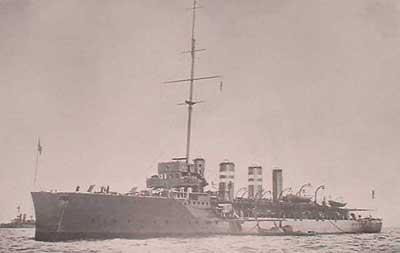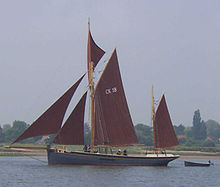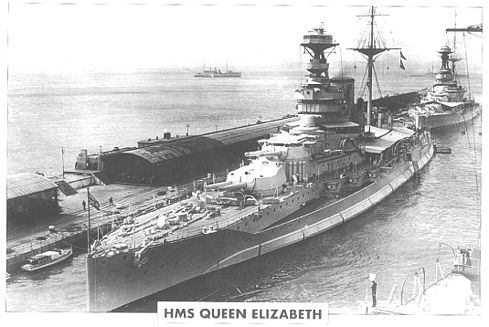You Sunk My Battleship! – World War 1 Boats And Battleships

SS Konigin Luise, 1914
Prior to the declarations of hostilities the Germans were the masters of technology and they had great plans to “Germanize” the world. In the grand view this would require that they have a better navy than the British had. At this time in history the British maritime fleets were protecting their Empire and in doing so were the rulers of the seas. With the development of steam power and steel hull armor, bigger and better battleships were being commissioned by all the navies.
By the outbreak of World War I the Allies had more ships, of all classes, at sea, than did the Central Power nations. Britain had twenty dreadnought class battleships, Germany thirteen and altogether there were hundreds of battleships upon the seven seas.
World War 1 Battleships
Battleships, with a displacement of greater than 10,000 tons, were built for specific purposes. HMS Dreadnaught (21,845 tons, 12 inch guns) was the world’s first dreadnought class battleship. The ship had an “all-big-gun” armament designed to provide as much protection, speed, and firepower as possible in a ship of realistic size and cost. There was only one battle between large dreadnought fleets; at the Battle of Jutland the British and German navies clashed with no decisive result.
The Germans used their pre-dreadnought battleships in the Baltic campaign but the largest number of pre-dreadnoughts were engaged in the Gallipoli campaign; twelve British and French pre-dreadnoughts provided support for the super-dreadnought class battleship HMS Queen Elizabeth, (31,100 tons, 15 inch guns) in attacking the Turkish shore defenses in the Mediterranean.
Battlecruisers Of The Great War
Battlecruisers were ships as large as battleships but faster and lighter; many of these ships were built, before and during the war. The armored cruiser was designed for commerce protection and raiding and was able to participate in battles. They were powerful enough and sufficiently protected to fight any ship capable of catching them and they were able to outrun battleships. The cruisers displaced up to 7,000 tons and were capable of speeds up to 30 knots and were armed with smaller caliber guns. The British built many of this type of cruiser.
At the other end of the cruiser spectrum were small, fast “scout” cruisers used for reconnaissance and escort duties, the HMS Amphion (3,440 tons, 4 inch guns, 2 torpedo tubes) was an Active-class scout cruiser. It was sunk by a mine in 1914.
World War I Destroyers
Destroyers were smaller and more maneuverable craft with a displacement of up to 1,000 tons. The first destroyers were essentially coastal craft, displacing only 200 tons, but their larger successors accompanied battle fleets at sea. At sea, a destroyer was a superior torpedo boat, capable of firing its weapons whilst maneuvering in fleet engagements.
The U.S. Navy “mass-produced” their destroyers; they were equipped with hydrophones, depth charges, guns and torpedoes. The US fleet was instrumental in overcoming the U-boat submarine threat and helped in providing safe passage of two million American troops to Europe without loss of a single soldier.
The Central Power fleets were mostly behind the Allies’ blockades which their submarines were able to “run” and continue the German offensives, particularly in the Atlantic Ocean. The Allies maintained defensive strategies with their submarines and convoy fleets whilst the Germans concentrated their offensive naval efforts on search and destroy tactics with their U-boats.
First World War Merchant Ships
Merchant ships of all sizes were on all the seas, transporting goods and passengers worldwide. During the war, merchant ships were armed and used as auxiliary warships such as the Q-ships:
- HM Armed Smack Inverlyon; a two mast, one gun, decoy sailing ship.
- The RMS Mauretania and Lusitania were designed to readily be converted to auxiliary cruisers but they proved to be impractical in that role (the liners had high fuel consumption and were too expensive for the Admiralty to operate).

HM Armed Smack – Similar To The Inverlyon
In 1915 the RMS Lusitania was reassigned as a Cunard owned luxury, passenger liner. She was identified, torpedoed and sunk by U-boat U-20 whilst of the coast of Ireland.
The Lusitania was carrying 1,906 passengers and crew, with a cargo of ammunition and shells (173 tons). The Germans, who had circulated warnings that the ship would be sunk, felt fully justified in attacking a vessel that was furthering the war efforts of their enemy.
The sinking was a huge factor turned sentiments in neutral nations against Germany. It was viewed as a particularly barbarous act given the blatant killing of so may civilian passengers. From a propaganda perspective, the Allies used this sinking to vilify the Central Powers as savage, brutal, and a direct threat to ‘civilized’ peoples everywhere.
Most Central Powers’ merchant fleets were sequestered “in-port” around the world, having surrendered or been commandeered by neutral and Allied commands. With destination ports being behind blockades sailing the Atlantic was too dangerous.
World’s First Aircraft Carriers
In 1918 the Royal Navy had converted a passenger liner, HMS Argus, (14,450 tons, 4 inch AA guns, 18 airplanes). Now armed, it was capable of launching and landing airplanes on a flight deck that extended from bow to stern. The Argus was the world’s first true through-deck aircraft carrier and was thus the prototype for all later carriers.
World War 1 Boats and Ships Photographs
